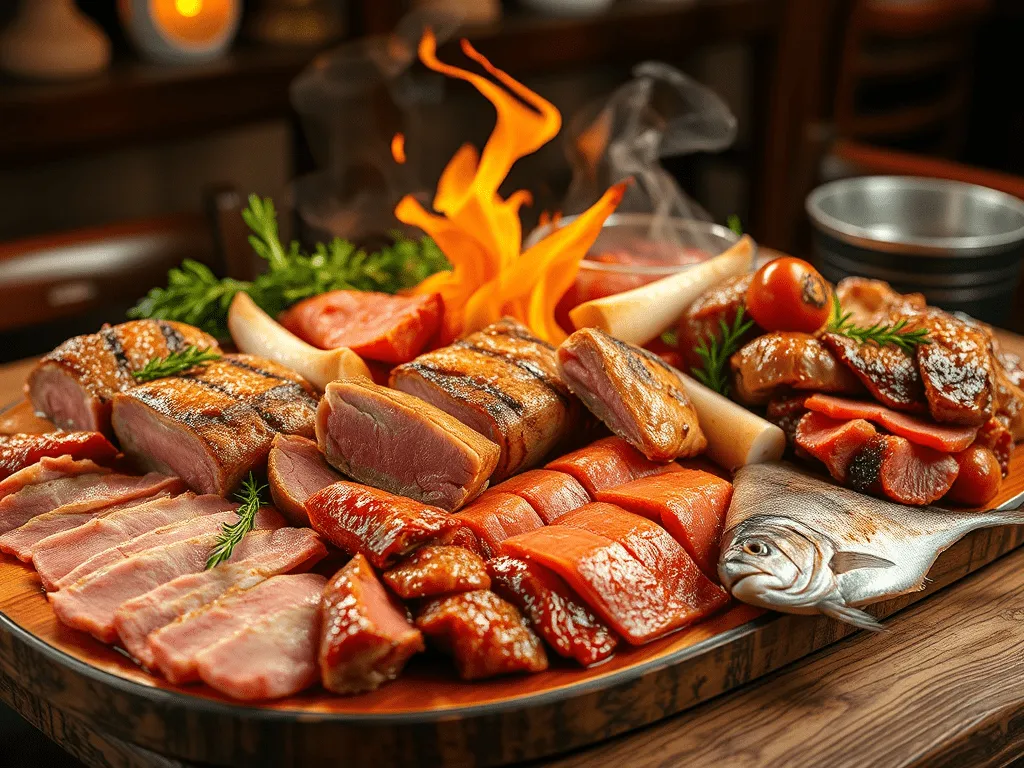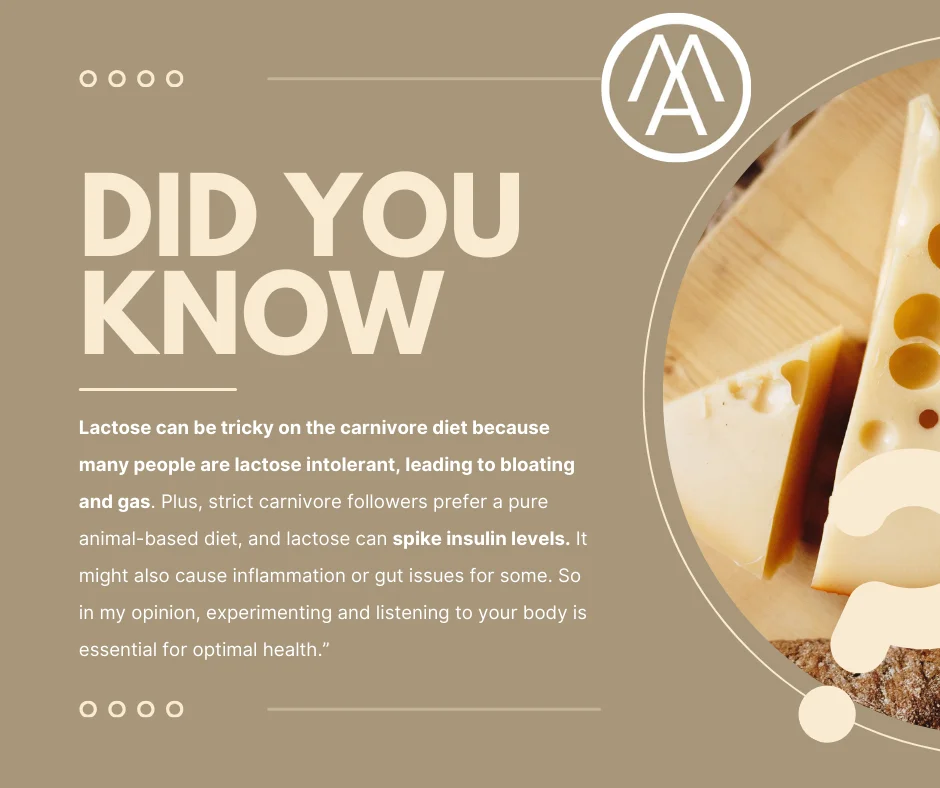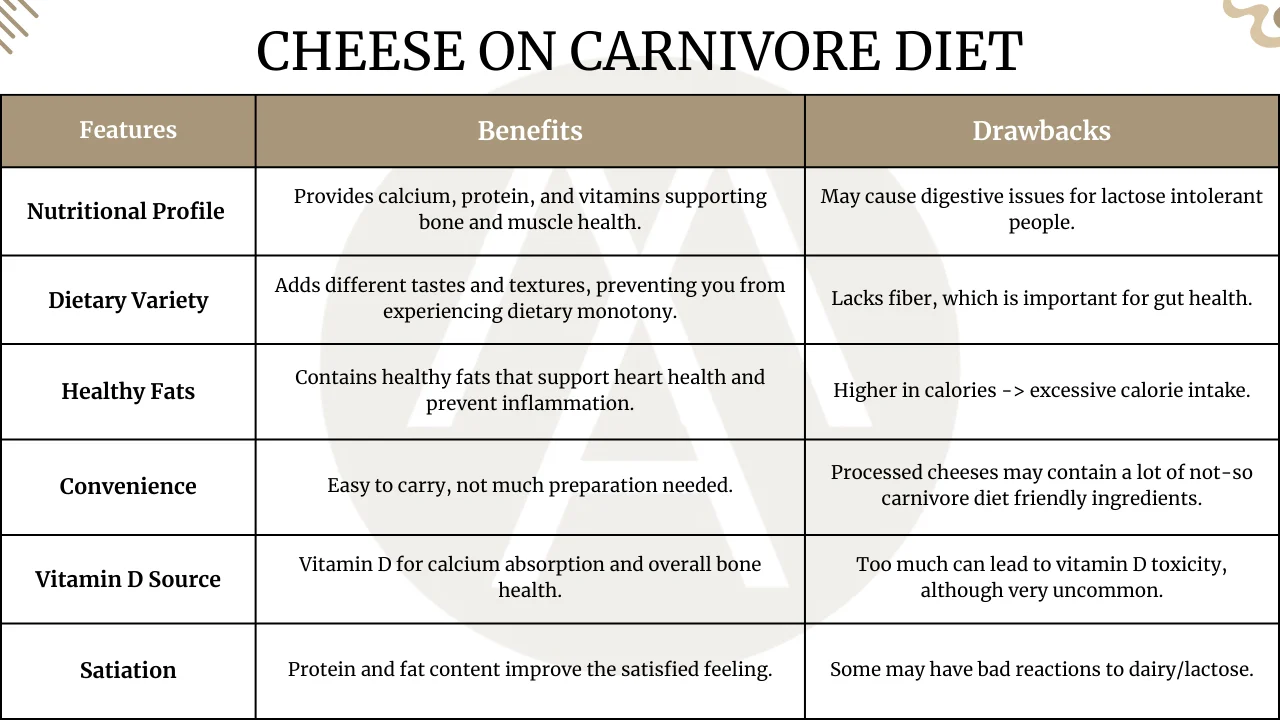Physical Address
304 North Cardinal St.
Dorchester Center, MA 02124
Physical Address
304 North Cardinal St.
Dorchester Center, MA 02124

Uncover What The Carnivore Diet Is! This All-Animal Food Plan Promises Mental Clarity And Energy By Eliminating Plant-Based Foods.
After my blogs on beef liver supplements and their benefits, today’s topic couldn’t be left out. The carnivore diet is a diet based on animal foods only. This strict diet eliminates all plant-based foods, from fruits and vegetables to seeds and legumes.
In fact, it is actually another version of the keto diet. Carbs are cut out entirely, and it promotes eating animal fats only. With this diet, you’ll also get into a state of ketosis, but that’s not the main goal for most people. Proponents of the carnivore diet are highly confident that it can help with mental clarity, better energy levels, and relief from inflammatory conditions.
Today’s blog will explain what the carnivore diet is, and why it’s gaining popularity in 2024. I’ll answer some frequently asked questions, give my opinion on it, and tell you exactly what you can and can’t have. Let’s go!
First, let’s go over a common question I see on the internet very often. Can you eat chicken on a carnivore diet? The answer is: yes, of course you can. The carnivore diet is focused on animal-based foods, and as far as I know, a chicken is an animal.
There are various ways to include meat options in the carnivore diet. The main goal here is to consume whole foods, coming down to lean protein. There is quite a difference in meat quality you can choose from here.
You can probably imagine that chicken breast is a better option than salami or any kind of processed meat.
Here’s the nutritional breakdown for 100 grams (3.5 oz) of cooked, skinless, boneless chicken breast (one of the cleanest and most popular cuts):
Considering every gram of protein has four calories, out of 165 calories, 124 come from pure protein. Perfect if you ask me. The little bit of animal fat is also great for heart health, blood clotting, and muscle movement.
There are 3 kinds of fats: saturated fats (unhealthy, not necessary), unsaturated fats (healthy, necessary omega-3’s), and trans fat, which is the worst kind of fat existing. For these, there is no safe level of consumption. In fact, it is even officially banned in the US.
Most people think fat is bad and, therefore, cut it completely out of their diet. However, it is actually essential for the human body thanks to fatty acids, such as omega-3. Cutting down on fat means also cutting down on the healthy ones. No bueno.
The unsaturated fat in chicken is great for getting in your omega-3 fatty acids.
Chicken is, besides turkey, considered one of the leanest animal protein sources out there. It consists of all nine amino acids, is not processed whatsoever, and perfectly suits a carnivore diet.
It is full of protein and omega-3 fatty acids and also consists of the needed electrolytes, such as sodium and potassium. It is also rich in vitamins B3 and B6, which you know are essential for brain health, for example (if you’ve read my blog on beef liver benefits).
Chicken knows different variations: chicken breast, filet, cooked, grilled; there are a lot of ways to go here. Prepare it in the way you like. However, make sure to limit your additive ingredients, as this can make it slightly unhealthy quickly.
Try combining it with some eggs for example to balance out your carnivore meal.
Rice = carbs and, therefore, does not suit a carnivore diet. I already told you in the beginning that the carnivore diet is a difficult one but offers quite a lot of benefits (but also some downsides).
If you want to cheat a little with your carnivore diet, add a little bit of whole-grain or brown rice. This has a lower glycemic index, leading to a smaller insulin spike and therefore limits your post-meal crash.
The carnivore diet limits its intake to just animal fats and protein. However, there also are some micronutrients that come from animal-based foods. Vitamin A, B6, B12, iron, zinc, magnesium, and folate (B9) are the most common ones.
There’s not really a direct alternative to rice for those on the carnivore diet. However, some animal-based foods can serve as a replacement for rice:
One question I also see very often is whether you can have cheese on a carnivore diet or not. Yes, you can, but it depends on the type of cheese you’re consuming and how strict you are with your carnivore diet. The carnivore diet mainly focuses on animal-based foods, like meat, fish, and animal fats. However, most people like to include cheese as well.
Two things you should be cautious of when choosing your type of cheese are:
Typically, harder, full-fat cheeses like gouda, cheddar, or parmesan have lower levels of carbs or are considered as low-lactose dairy. This makes these more compatible with the carnivore diet.

It’s hard to say whether dairy products are healthy or not. For a really long time, I believed dairy products were healthy because of their protein content and their “whole foods” label.
According to Vasanti Malik, a nutrition research scientist with the Harvard T.H. Chan School of Public Health, dairy isn’t essential in the optimal diet. There are many ways to substitute the nutrients found in dairy.
However, for many people, consuming cheese is one of the simplest ways to obtain essential calcium, vitamin D, and protein necessary for maintaining healthy and properly functioning hearts, muscles, and bones.
So, if you prefer dairy in your diet and struggle to meet your protein & calcium goals, including dairy in your carnivore diet is a solid option.
To find out what the benefits and drawbacks of cheese are in a carnivore diet, check the following diagram:

The best cheese options for a carnivore diet are:
In my opinion, the carnivore diet just isn’t really worth it. Usually, I’m a huge advocate for whole foods and eating as our ancestors did, but the carnivore diet is taking it to extremes. There are still so many nutrients you might be lacking when you don’t consume any kind of dairy, vegetables, fruits, or seeds. When it comes to nutrition, I’m all about balance. The carnivore diet does not suit that criteria.
Besides that, this diet is EXPENSIVE. But really, in The Netherlands, this diet would cost you €20-€25 minimum per day. Meat and fish tend to be expensive, especially when you buy directly from farmers (which I recommend; supermarket meat & fish have a lot of hormones & additives in them). Farmers’ meat is often grass-fed as well – check my blog on beef liver to find out why that’s essential.
With that said, I understand why so many people are interested in the carnivore diet. Meat & fish are high in proteins, healthy fats, and essential vitamins & minerals we’re missing in the normal diet. Vitamin D, for example. Normally, the only way of getting enough vitamin D is by living in a country where the sun is shining in the mornings every day (sunlight exposure) or by supplementation. With enough animal-based foods, you might be able to reach your goals with just your nutrition.
I’m not a doctor, so I’m not going to advise you on anything related to your own health. Decide for yourself whether you think the carnivore diet is right for you. The only thing I have to say is: when you opt-in on the carnivore diet, make sure to buy high-quality, rather grass-fed animal-based foods. Slightly more expensive, but surely worth it in the long run.
The carnivore diet has gained popularity, but it comes with several potential health risks due to its focus on high-fat, high-cholesterol, and sodium-heavy foods, and the lack of essential nutrients.
A diet rich in saturated fat from meat can raise LDL cholesterol, increasing the risk of heart disease. Processed meats, often high in sodium, can also contribute to high blood pressure and cardiovascular problems.
High-protein intake places extra pressure on the kidneys, which could lead to chronic kidney disease, especially in those already at risk.
Without fiber from plant-based foods, the carnivore diet can lead to constipation, gut inflammation, and increase the risk of colon cancer. Lack of fiber also disrupts gut health, affecting digestion and overall well-being.
Eliminating fruits and vegetables deprives the body of essential nutrients, increasing the risk of osteoporosis due to a lack of vitamins and minerals that support bone strength.
In summary, I see the carnivore diet as an extreme diet that is only sustainable for a relatively small percentage of people. While it offers potential benefits like improved mental clarity and energy, I also recognize some notable downsides, such as the risk of nutrient deficiencies and higher grocery bills.
If I were to try it, I would prioritize high-quality, grass-fed animal products to get the most nutrients possible. Ultimately, I believe finding a balance in my diet is key, and it’s important to consider your own health needs and preferences. At the end of the day, I’m also just providing you with the most reliable information I found on the internet. I always recommend doing your own research before adapting your lifestyle.
Whether you are curious about the carnivore diet or just exploring your options, I always recommend trying and experimenting with different diets in a safe way. Your health is not something to mess with, rather consult a healthcare specialist beforehand.
Joe Rogan’s carnivore diet is a strict approach focused on consuming mainly animal products. He includes beef, chicken, fish, eggs, and organ meats, and lays the focus on high-quality, grass-fed options for maximum nutrients. Rogan often shares his experiences on his podcast (recommendation by the way), highlighting his experienced benefits like improved mental clarity, energy levels, and workout recovery.
However, he also acknowledges the challenges, such as potential nutrient deficiencies and the higher cost of quality meats. Overall, Joe Rogan’s journey with the carnivore diet showcases both its advantages and pitfalls. He stopped the carnivore diet because he felt like he wasn’t able to go all in on his workouts.
No, bananas are not allowed on the carnivore diet. This diet strictly focuses on animal-based foods, eliminating all plant-based options, including fruits and vegetables. Bananas, being a high-carb fruit, go against the fundamental principles of the carnivore approach.
While bananas are packed with nutrients like potassium (electrolytes) and vitamin C, they also contain sugars and carbohydrates that are not compatible with a carnivore lifestyle. If you’re following this diet, you’ll want to stick to meats, fish, eggs, and animal-derived products. If you find yourself craving something sweet, consider exploring low-carb alternatives that fit within the carnivore framework.